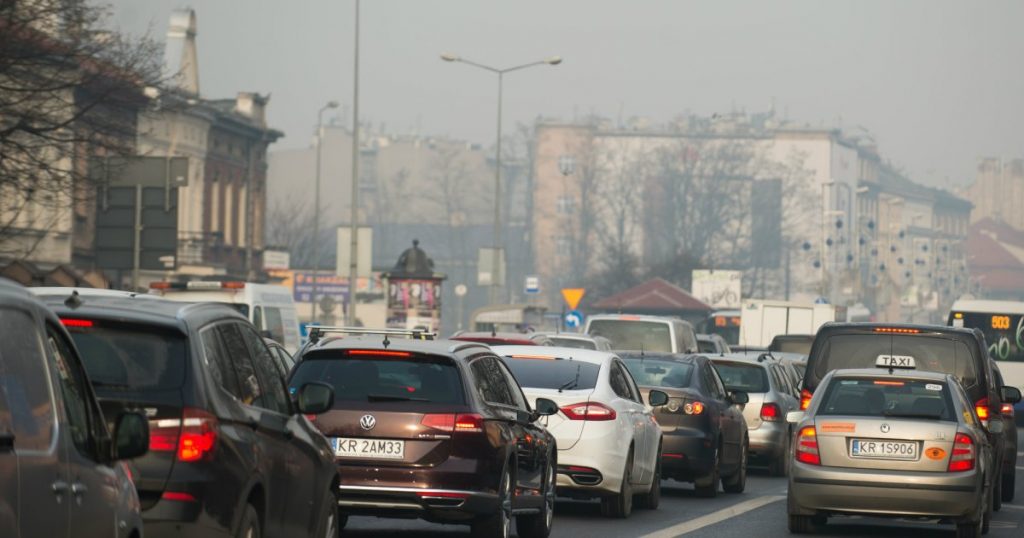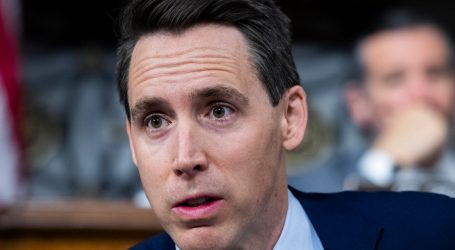The Trump Administration Just Launched a “Brazen Attack” on Clean Air Standards
The demands showed a marked shift from 2012, when automakers, two of which had just received massive taxpayer-funded federal bailouts, agreed to increase standards after months of negotiations with federal and California regulators. But by 2016, fuel prices had fallen from a record high national average of $3.60 per gallon four years earlier, and Americans were once again buying gas guzzlers. Automakers insisted the landscape had changed. In April the EPA agreed. In a 38-page finding, the agency repudiated the Obama administration’s consideration of the social cost of carbon―the health and environmental damage caused by emissions―and energy security valuation.
Trucks and SUVs are more profitable for automakers. General Motors earns $35,000 in profit for each $73,000 Cadillac Escalade it sells, according to The Detroit News. By contrast, electric vehicles are generally half as profitable as cars with combustion engines, a Daimler executive admitted last year.
Three weeks after the EPA said it would revise fuel economy standards, Ford, reporting a $1.7 billion quarterly profit, announced plans to discontinue all but two car models in favor of SUVs and trucks.
The intense focus on large, fuel-hungry vehicles comes amid a rapid shift toward electric and fuel-efficient cars in Japan, the European Union and China, the world’s largest auto market. China’s electric vehicle market is growing twice as fast as the United States’, and regulators in Beijing are considering banning combustion engines.
“The auto companies are whistling past the graveyard that is the Chinese auto industry when they cease making efficient cars and switch over to mostly gas-guzzling SUVs and trucks,” said Daniel Becker, the director of the Washington-based Safe Climate Campaign’s Center for Auto Safety. “It will pose problems for them even in the United States when gas prices do eventually rise.”
He blamed low demand for electric vehicles (EVs) on the auto industry, which spends roughly $15 billion a year on marketing that promotes pickup trucks and SUVs, including coveted and costly Super Bowl time slots. A study published in December in the journal Nature Energy found dealerships “were dismissive of EVs, misinformed shoppers on vehicle specifications, omitted EVs from the sales conversation and strongly oriented customers toward petrol and diesel vehicle options.”
But it’s the oil industry that may stand to gain most from the Trump administration’s new fuel economy rules. Adding 540 million electric vehicles by 2040 would cause oil demand to peak in the mid-2020s, wiping out $19 trillion in possible revenue for oil producers, according to a report released in May by Aurora Energy Research, based in Oxford, England.
“This is one of the most destructive policies in terms of increasing emissions,” said Luke Tonachel, the Natural Resources Defense Council’s director of clean vehicles and fuels. “Rolling back the standards is a giant giveaway to the oil industry at the expense of public health.”
The move comes six days after the EPA backed down in its first a major legal battle with environmental groups and 16 states over a loophole granted to manufacturers of “super-polluting” semitrucks. The rule, issued in Pruitt’s final hours before his controversial tenure as EPA chief ended in early July, lifts a 2016 requirement that truck makers dramatically reduce the number of “glider trucks” ― new truck bodies and cabs with salvaged engines and chassis―to 300 per manufacturer per year.
A single glider truck emits 30 times as much nitrogen oxide and 60 times as much particulate matter as a modern truck, according to the EPA’s own tests from November 2017. A federal judge stayed the loophole in late July, but if the EPA ultimately wins in court, the trucks expected to be sold in the next year alone would release 13 times as much nitrogen oxide over the next decade as all the diesel cars Volkswagen sold with fraudulent emissions controls.
Last week, Wheeler reversed the rule.
But Thursday’s proposal could instigate an even bigger legal fight. Thirteen states have now adopted California’s rules, representing nearly 40 percent of the US vehicle market: Colorado, Connecticut, Delaware, Maine, Maryland, Massachusetts, New Jersey, New York, Oregon, Pennsylvania, Rhode Island, Vermont and Washington.
“The Trump Administration has launched a brazen attack, no matter how it is cloaked, on our nation’s Clean Car Standards,” California Attorney General Xavier Becerra said in a statement. “The California Department of Justice will use every legal tool at its disposal to defend today’s national standards and reaffirm the facts and science behind them.”
Becerra, Massachusetts Attorney General Maura Healey and Pennsylvania Attorney General Josh Shapiro plan to a host a call with reporters later on Thursday morning.





